The ROVE Puzzle of Space Exploration and Moving Modules

Arrange modules in specific patterns to complete missions and explore a distant planet with limited movement in ROVE.
The genre of space-related games is vast, ranging from the smallest games to expansive options that require a full gaming table! ROVE: Results-Oriented Versatile Explorer is a very compact choice that offers a spatial puzzle with a sort of narrative panorama for completed missions. I was excited to get these modules moving around on a new planet!
Game Overview
Game Name: ROVE: Results-Oriented Versatile Explorer
Publication Year: 2021
Designers: Dustin Dobson and Milan Zivkovic
Artists: Dustin Dobson and Milan Zivkovic
Publisher: Button Shy
Solo Mode: Designed for Solo (Included in the Base Game)
Missions provide guides for how to lay out the 6 modules, which must be moved around to complete patterns. With movement restrictions and special abilities, aligning everything can be quite the spatial challenge! Yet in the end, the mission portraits align for a fun little story.
First Play
April 28, 2023
Complexity
2
Latest Play
April 29, 2023
Expansions
5
Setup Time
Almost None
Lifetime Plays
6
Play Time
15 Minutes
High Score
7
Game Area
20" x 18"
Low Score
4
Explorer or Alien?
Admittedly, I didn’t have any Calico Critters that really fit this space exploration theme, nor anyone remotely robotic. So the auditioning process was unique…
I settled on this absolutely adorable penguin, dressed up as what? That’s right: An ice cream cone! Ha ha!
Poised to endure some extremely cold temperatures, this was the cutest depiction of a space explorer. Alternatively, maybe this penguin was an alien acquaintance.
Sufficiently happy with my little helper, I set out to get those modules moving to complete the missions.
A Too-Tiny Rulebook
I love the small footprint of wallet-sized games, yet I sometimes struggle with the tiny rulebooks. Shrinking it all down into a pamphlet makes sense… Just not for me.
With practically no visual examples, I found myself reading everything multiple times. The different types of movement made me pause much longer, too.
We all learn rules in a different way, which can make even the best rulebook a little obtuse to some. No worries!
My issues with the rulebook were overcome after a couple of plays, but I was somewhat lost for a bit. Lost in space?!
Fun Scenes & Patterns
Each mission depicts an illustrated scene, pattern, and specific name to give it a little more flavor.
The goal is to arrange the 6 modules into the correct pattern by moving them around. Much easier said than done, especially since missions are so very different!
Completing a single one rolls right into the next one, which typically involves some major rearranging.
Initially, I wasn’t in love with gameplay. Still, I attributed that to my struggles with the rules. Slowly, I started to get the hang of things and saw the fun inside the puzzle.
Moving Efficiently
Not unexpectedly, the card count is limited by using the back of mission cards for movement cards. Clever!
The top value can always be used, but the larger bottom value is possible if the pattern is correct before the card is played. Lots and lots of pattern matching here!
Another neat touch are the hash marks on the border. These help count down the movement points still available on a card, as only a single one is active at once.
I liked the idea, and began to find neat ways to move modules and use special abilities to complete patterns.
Looking Closer at My Puzzle Learning Skills
A spatial puzzle game involves moving components around, often to complete patterns or otherwise achieve goals based on arrangements. Imagine a slide puzzle, which is a very simple example: Only a single piece can be moved at once, but it’s important to be able to think and see ahead to how these components interact and move.
As I’ve discovered over the years, solo spatial puzzle games can be a hit-or-miss for me. That’s nothing against the individual games, though! It’s a product of how my mind works and whether I feel like I’m having fun forming the patterns. Sometimes, it comes down to graphic design and my own struggles with seeing the bigger picture.
In short, we all learn differently, and that’s part of why there are so many games out there. Learning techniques and puzzles that click for me won’t be great for everyone. But it’s important to understand that frustration and confusion can come from outside of a game. Those with truly terrible rulebooks are rather rare, though they do exist.
This is also why I try to stay positive about a lot of spatial puzzle games. Those that don’t work for me, or make me outright mad, aren’t inherently bad games. Self-reflection is a nice part of this hobby that continues to help me learn a little more about myself. The simple slide puzzles I played many years ago continue to have an influence!
A Panoramic Story
Despite the focus on the modules, the completed missions took center stage with the way they overlapped to show a short story of the explorer’s adventure. So cute!
I had to work hard to figure out how to move some of the most stubborn modules, yet victory was possible.
Of course, I started off at the easiest difficulty level and didn’t succeed more than a couple of times. Once, it happened with the very last movement point!
The spatial puzzle wasn’t something I could totally grasp, yet there were plenty of enjoyable moments.
Rolling to Victory
Are space penguins real? This one was! While the actual explorer rolled around the planet, I had a helper who was all too eager to act out the part. Pure dedication!
This was an interesting initial experience because I wasn’t sure what my opinion was about the overall game.
I couldn’t “see” all of the possible moves, which left me confused at times. Yet I still pressed on and could see the fun in piecing together the puzzle, which I managed to do!
Perhaps I just needed to take a lesson from this ice cream cone imposter… Just roll with it, and scoop up the fun!
Session Overview
Play Number: 1-6
Solo Mode: Designed for Solo (Included in the Base Game)
Play Details: Easy Difficulty Level
Outcome: 4, 7, 4, 5, 7, 4 (2 Wins & 4 Losses)
Not too shabby for a first outing! My win ratio was at least remotely acceptable, even for not quite seeing all of the ways to move the modules. I will say that this often indicates a good game: I’m still thinking about it and how it will change with a higher difficulty level, plus all of the expansions I picked up. Definitely glad I gave this one a whirl… Plus a twirl, step, and jump for all the movement!
%
1 Play
Affordability
Price & Value
7
Functionality
Challenges & Mechanics
9
Originality
Design & Theme
5
Quality
Components & Rules
6
Reusability
Achievement & Enjoyment
7
Variability
Distinctness & Randomness
4
+ Pros (Positives)
- Multi-purpose cards help reduce the number of components and keep this a proper wallet-sized solo game.
- Figuring out the best way to complete a pattern takes a lot of thought, and is a very rewarding challenge.
- Differences in the modules create additional ways to think through all possible moves to complete patterns.
- Hash marks on the edges of the movement cards make it very easy to track any remaining movement points.
- The overlapping artwork creates a fun little panorama that tells the story at the end of every play.
- Gameplay moves as quickly as desired, and so long as moves seem clear enough, it all flows smoothly.
– Cons (Negatives)
- The rulebook is very small and short, but the lack of visual examples can make the first few plays confusing.
- It can be a lot to consider how every module can move to create the mission or movement card patterns.
- Gameplay is generally repetitive with working through similar puzzles to move modules around.
- Not a lot of variety exists with the base game, aside from the order of the missions and movement cards.
Victory Conditions
Complete 7 Missions
- Overall Goal Progress 100%
Goals and Milestones
Win at least 1 game at the easy difficulty level.
Continue the Conversation
Have you played ROVE: Results-Oriented Versatile Explorer? It was a very different sort of experience for me, although one I mostly enjoyed! What other solo spatial puzzle games do you like? My mind needs to be in the right place to attempt this again, yet I’m looking forward to trying out more content and working on more spatial puzzle challenges!
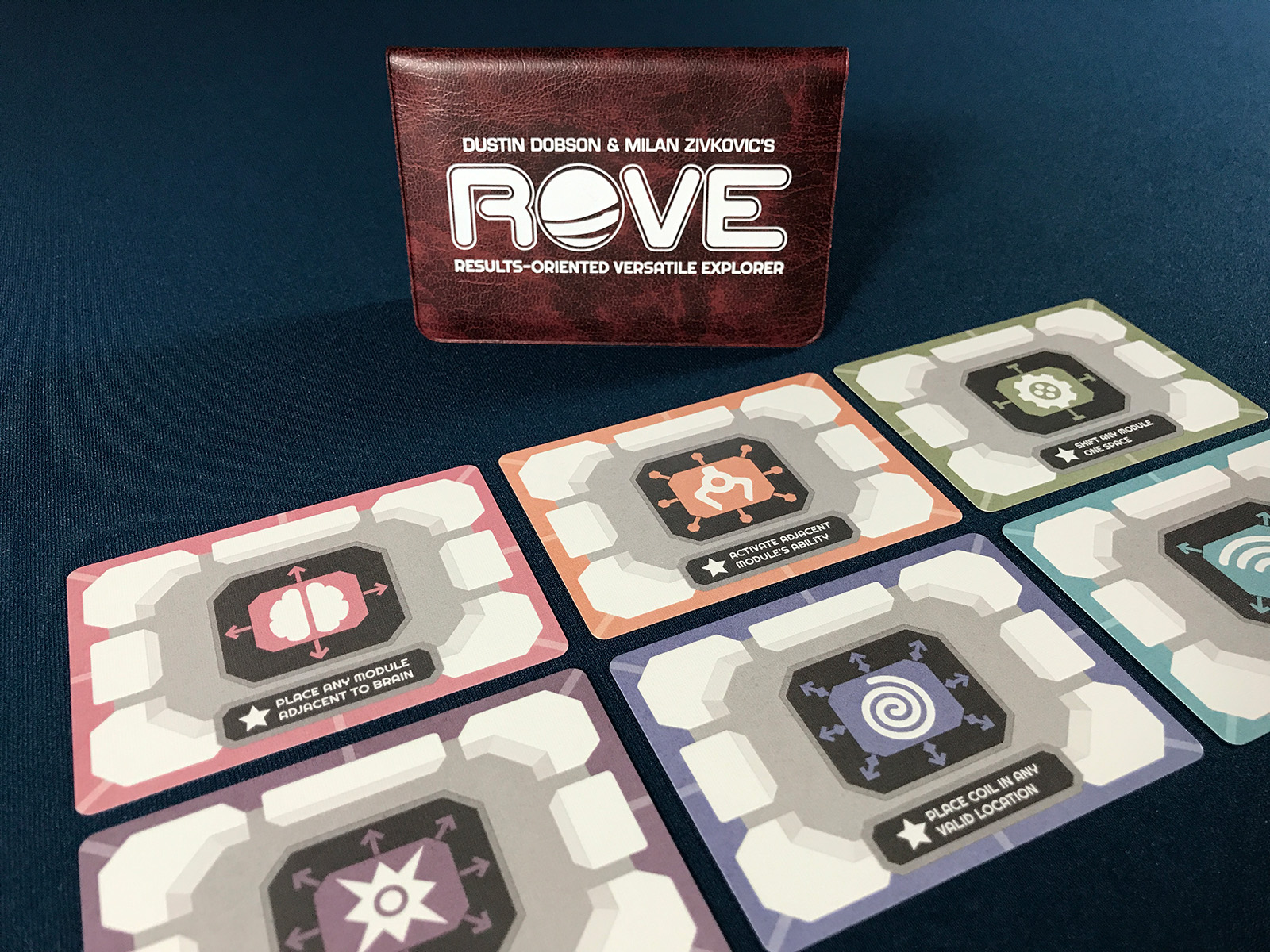
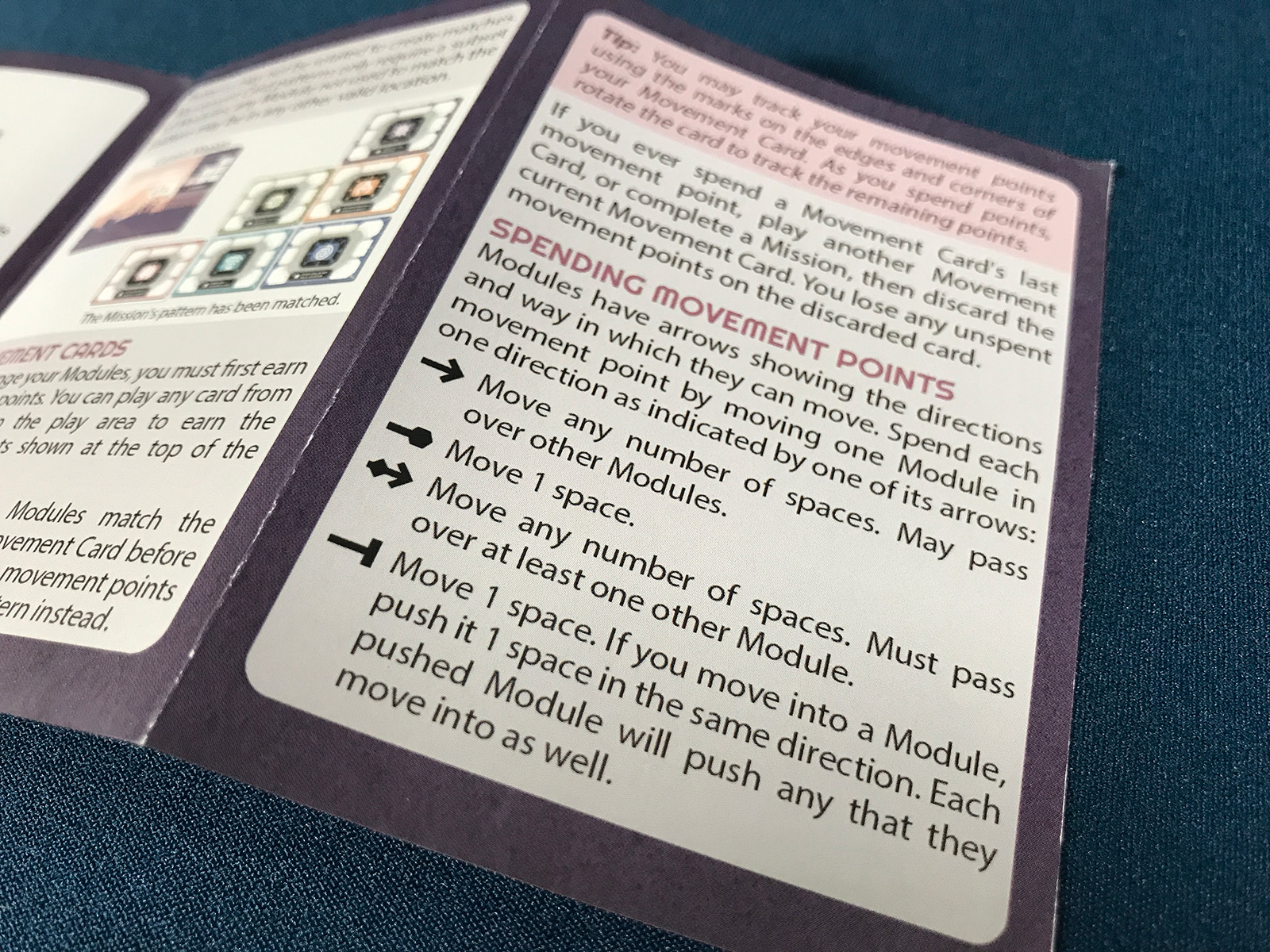
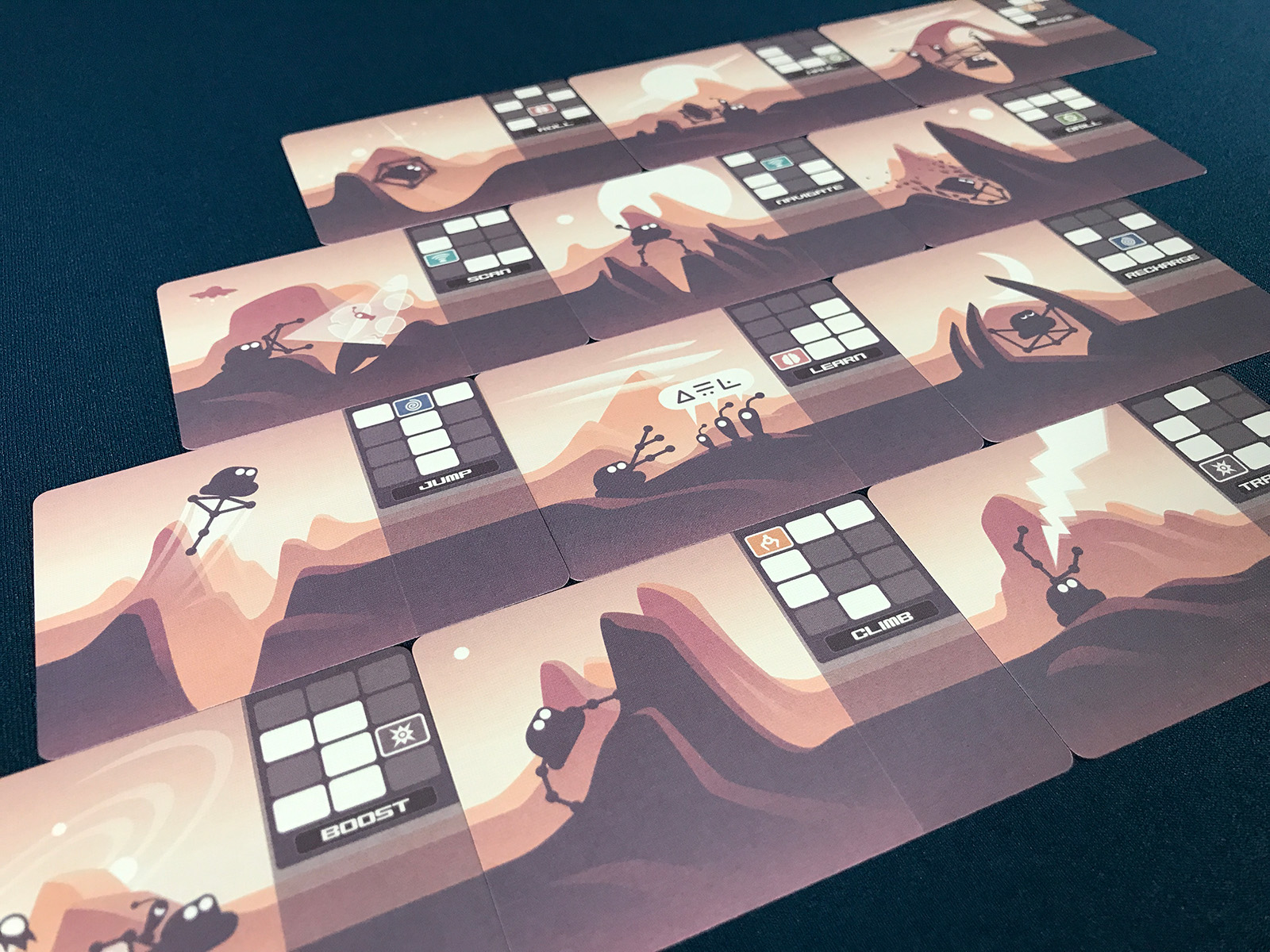
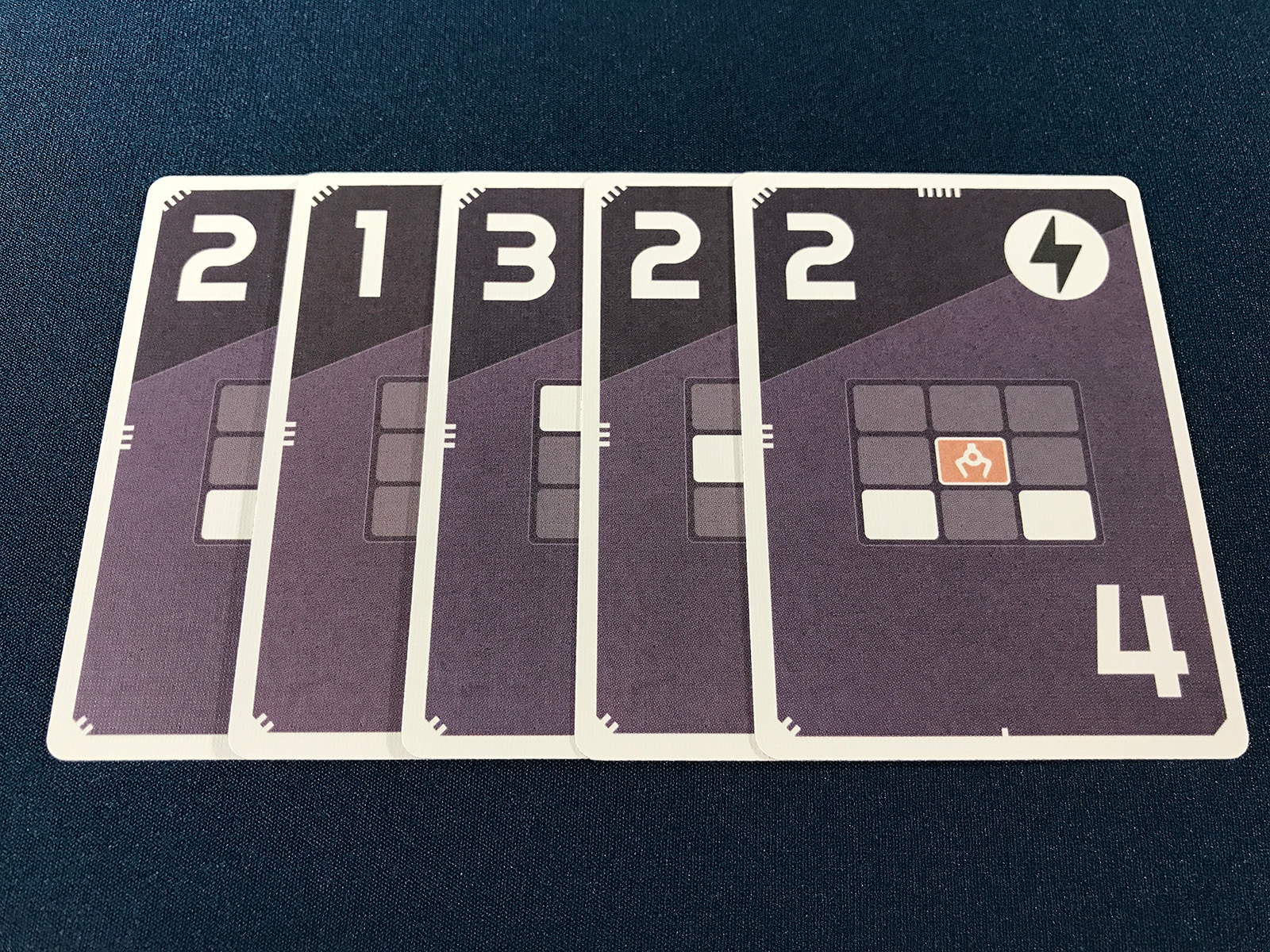

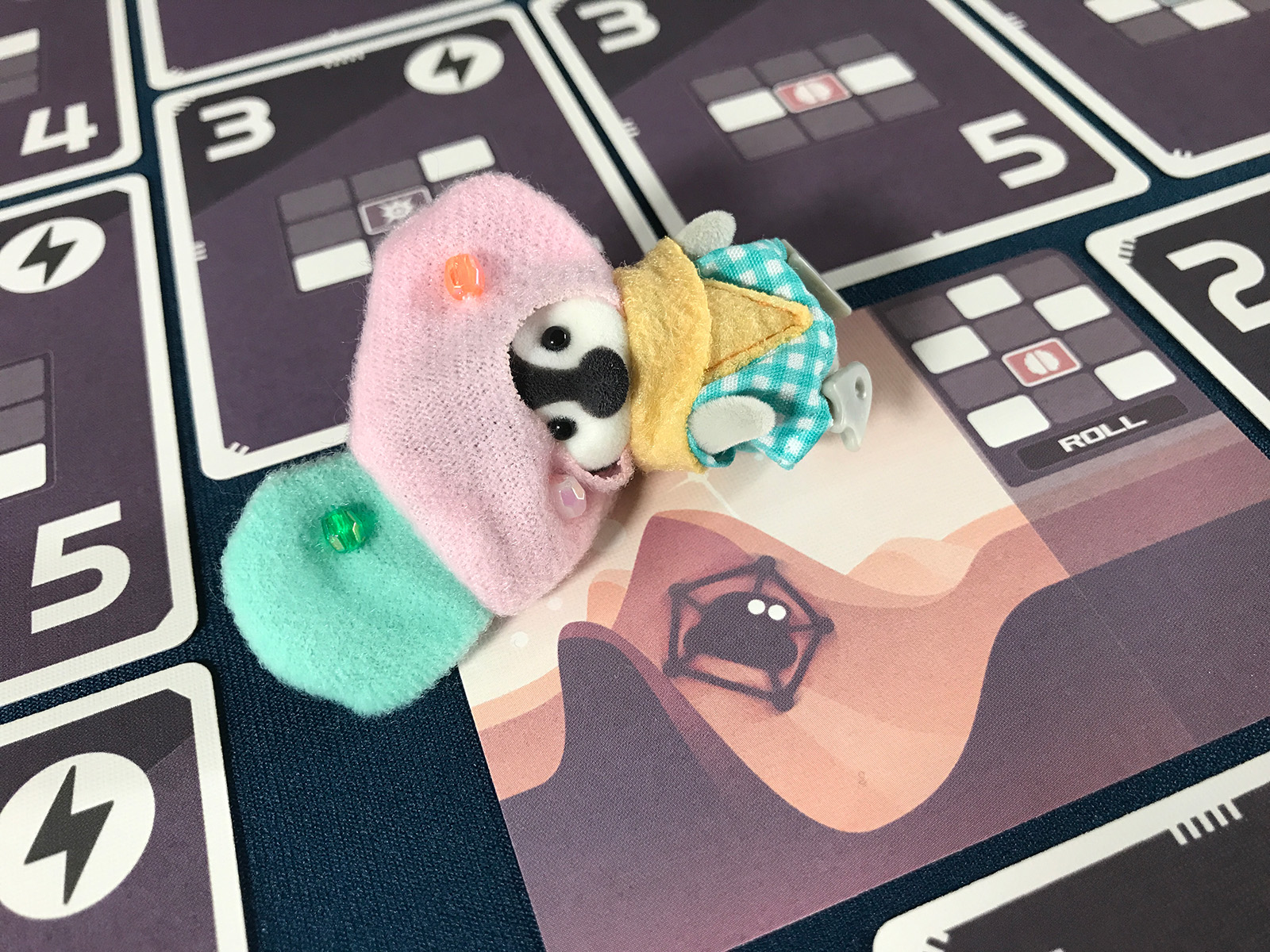
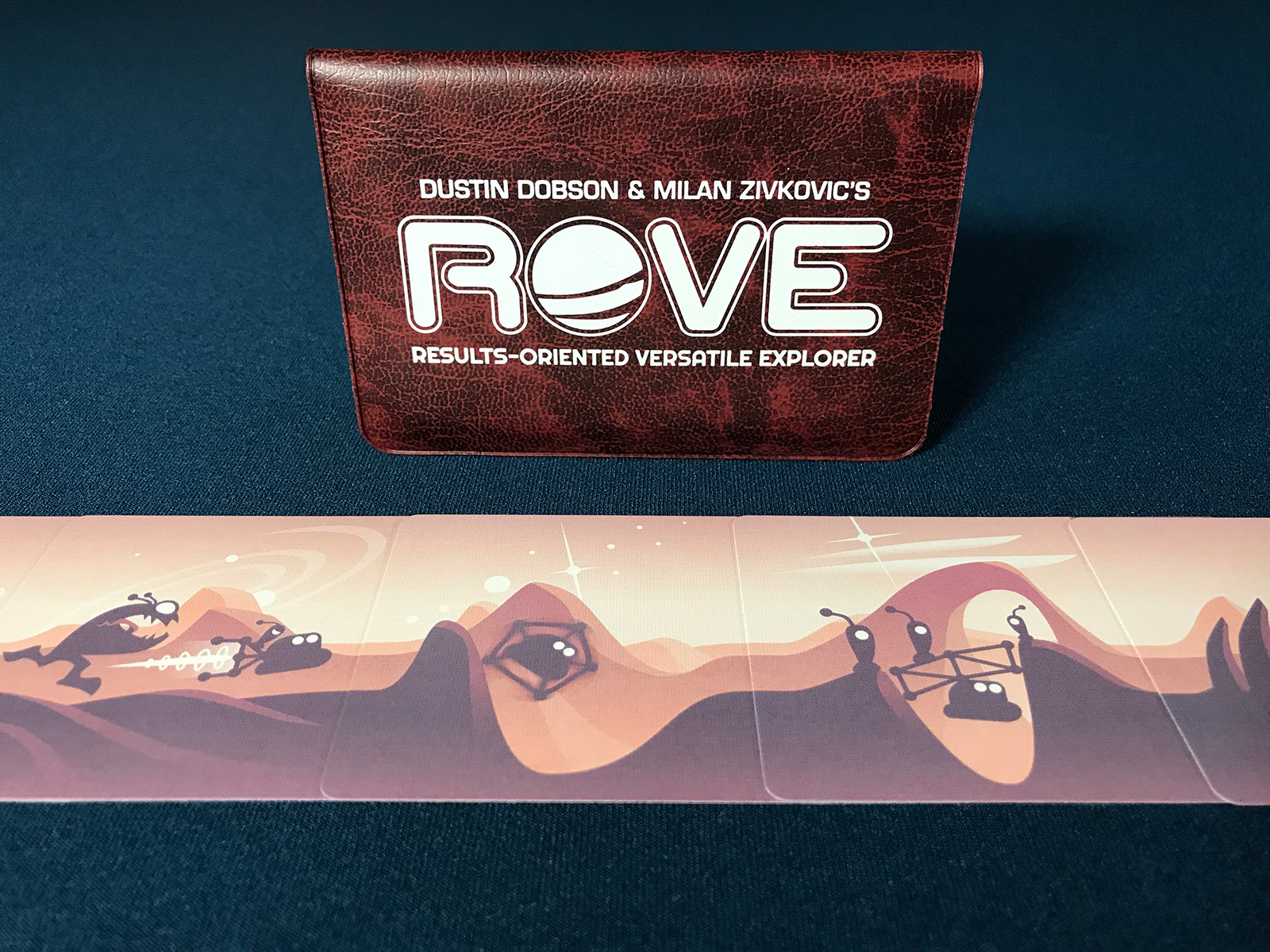
0 Comments